Writing Mini-Lessons for the Year
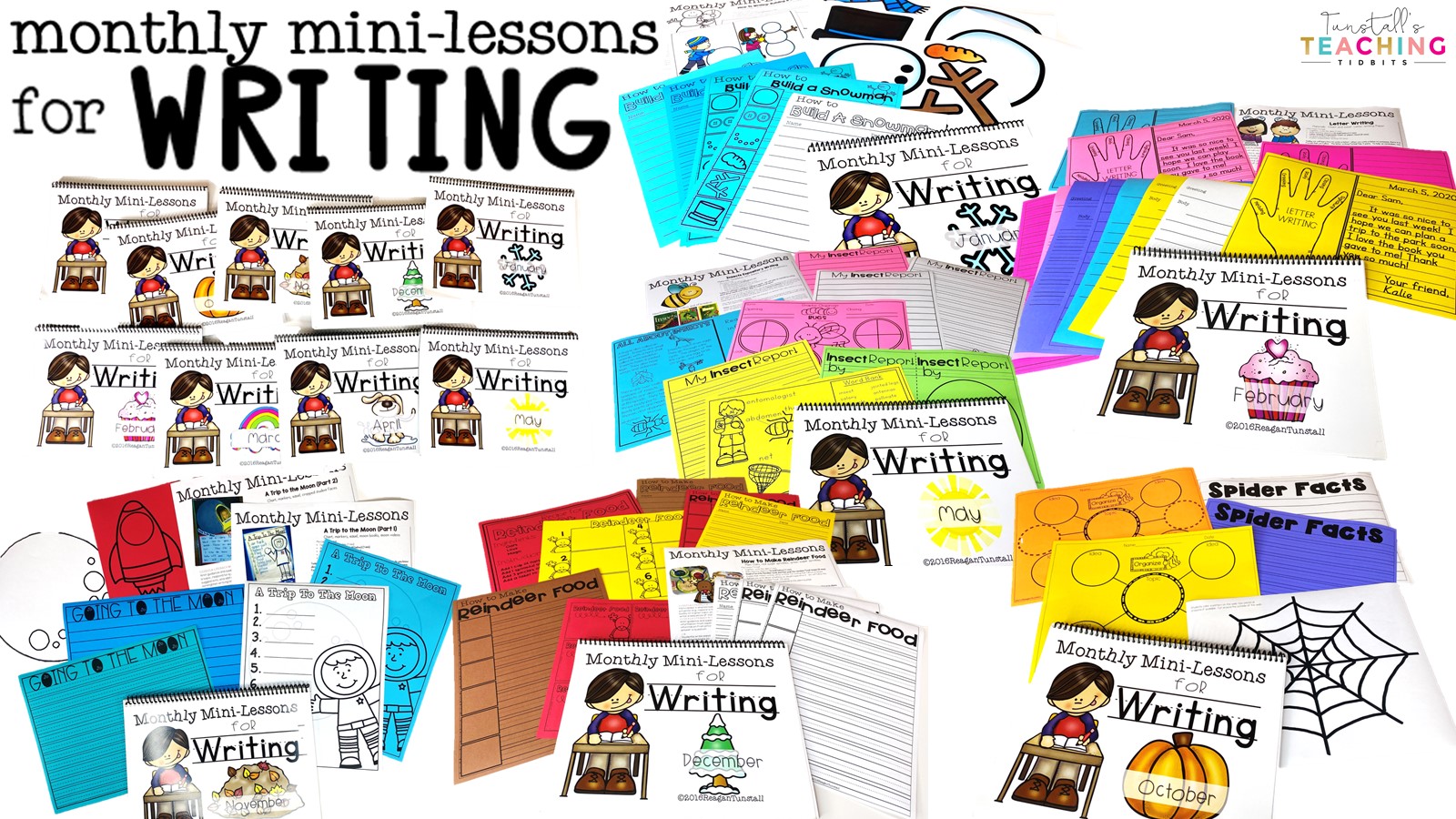
Creating consistent and meaningful writing mini-lessons is a daunting task even for an experienced teacher. A writing workshop session with 26 pencil yielding primary students can sometimes leave us feeling like we also need psychology and philosophy degrees. Having consistent writing mini-lessons for the year is challenging, but I hope I can share some insight on how I work through the standards and help foster the love of writing along the way!
Writing Mini-Lessons for the Year
Once I began feeling more confident with reading and math as a new teacher, I allowed myself to focus on understanding and developing writing lessons for two full years. During this time I focused on reading professional development books on teaching writing.
Importance of Mentors
I also reached out to mentor teachers to come in an share their expertise in this area with my students and myself. This was one of the most valuable tools. Reaching out and asking for mentor teachers to come into my classroom and demonstrate lessons allowed me to experience the lesson right in the safety of my own classroom with my own students. This time spent on reading research and experimenting with my students, helped me to come to realizations about teaching writing.
I learned that teaching writing has powerful breakthrough moments. Cue the single tear rolling down my cheek as I read a touching moment shared with voice, expressive vocabulary choice, and proper spacing in student writing. There are also periods of time where we feel like I hit a lull in what comes out of the lessons and just need to continue to be consistent in the instruction exposing new delivery methods and engaging topics.
Integrating science and social studies in my writing began as a natural connection to the world around us and how we relate to it. As a teacher with a limited amount of time each day, this connection also makes sense because I am able to teach three important sets of standards through integration. I find a lot of inspiration from looking at the seasonal changes in theme, science standards, and natural connections to our community and world around us.
Consistency in exposing students to great traits and then allowing them the time to apply it in their own writing is crucial. Students can’t develop their writing without being given the time to write. If we simply ask students to write without exposing them to new goals and traits of great writing, we will continue to get the same writing back. It isn’t about flashy bulletin board writing, but in the simple day to day exposure and practice through writing mini-lessons.
A Writing Mini-Lesson from Beginning to End
Let’s take a look at a writing mini-lesson from beginning to end. I have developed a full year of writing mini-lessons for kindergarten, first grade, and second grade.
Beginning the Year
This writing mini-lesson is taken from September. It is a beginning of the year lesson that helps students to express themselves and their interests with classmates and then becomes an all about me writing. The lesson begins with a read aloud of (af) Wilfrid Gordon McDonald Partidge. In this story, a character shares memories of life through a Me Bag. Following the story, teacher shares a couple special life moments from items in a “me bag” to help students connect to the story and the idea of sharing life moments through objects.
Students take home an empty “me bag” with a note explaining the types of items students can bring in to share. The focus is on personal events or special moments shared with family or friends.
Students then get a turn to share from their me bag memories. This can be done one item at a time or one student at a time. The items and their memory are now future writing topics for that student to refer back to when it is time to write. It also helps students to connect with each other and build classroom community.
Additional Writing Examples
Another lesson from September writing mini-lessons in kindergarten, first grade, and second grade is All About Me writing. This lesson will carry over multiple days. It can be highly structured or you can use a template that is less structured if your students are ready to write more independently. To begin, we discuss that great writing has details. Details give information. We relate this to a self portrait. Using a mirror we study our faces and the small details that make us special. To engage students, we start with a self portrait including as many details as we can.
Once we have penciled in our self portrait, students (or teacher) will use a sharpie to trace over the lines. Next, students fill in with color or marker.
Teacher then introduces the sentence stems and allows students to stretch sounds to fill in those blanks. For more independent writers, the sentence stems have been removed.
Students can also use the sentence stems as a rough draft copy and then can transfer to writing the full sentences out themselves.
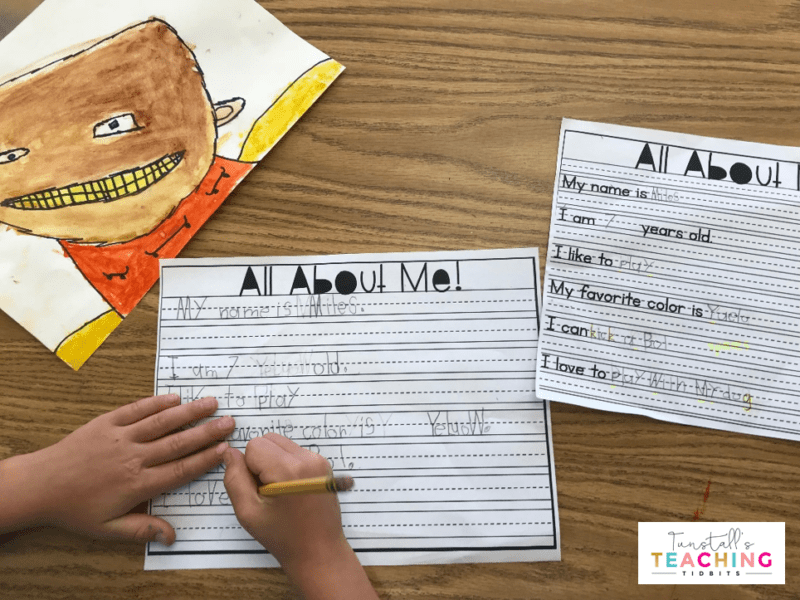
The mini-lessons in the bundles for each grade level have lessons like this one that can run over multiple days to completion as well as writing mini-lessons that are completed in just one or two sessions. The example below shows a less supported template.
Another tip I love to share is to keep rough drafts below final drafts. Writing is a beautiful process. Celebrate the messiness of creating a piece of writing! It’s a badge of honor!
Writing Mini-Lessons Month by Month
I have developed writing mini-lessons like the two I shared here for each month of the school year. There are 8 mini-lessons for each month. Some will span a few days and others will just be a daily lesson. The lessons are aligned to the common core and the Texas Teks. Below you can find the links for Kindergarten, first grade, and second grade.
Kindergarten Bundle of Writing Lessons for the Year
First Grade Bundle of Writing Lessons for the Year
Second Grade Bundle of Writing Lessons for the Year

 Contact Us
Contact Us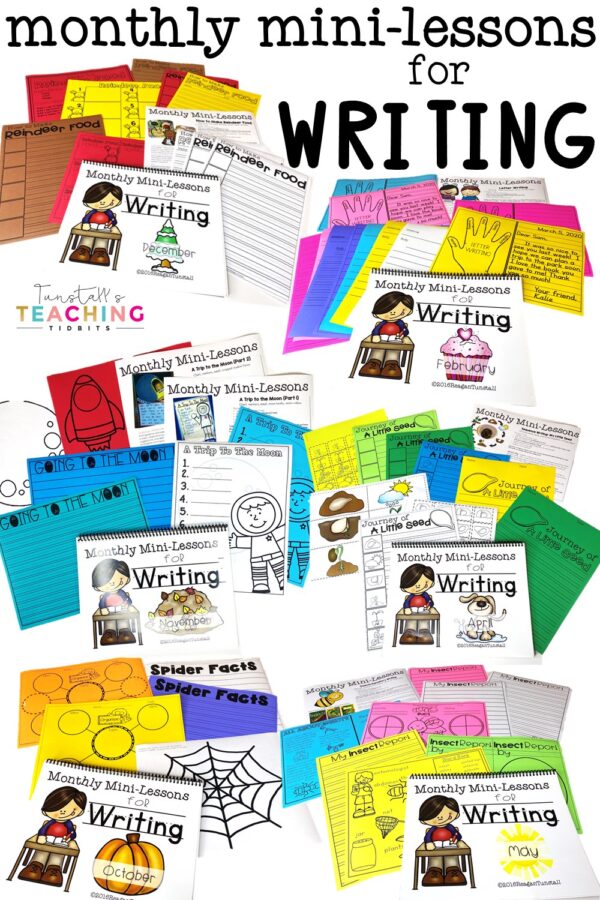

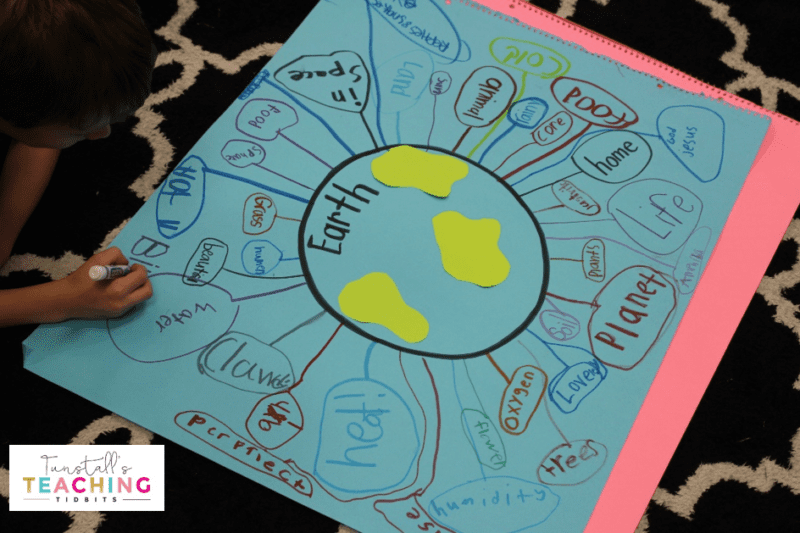


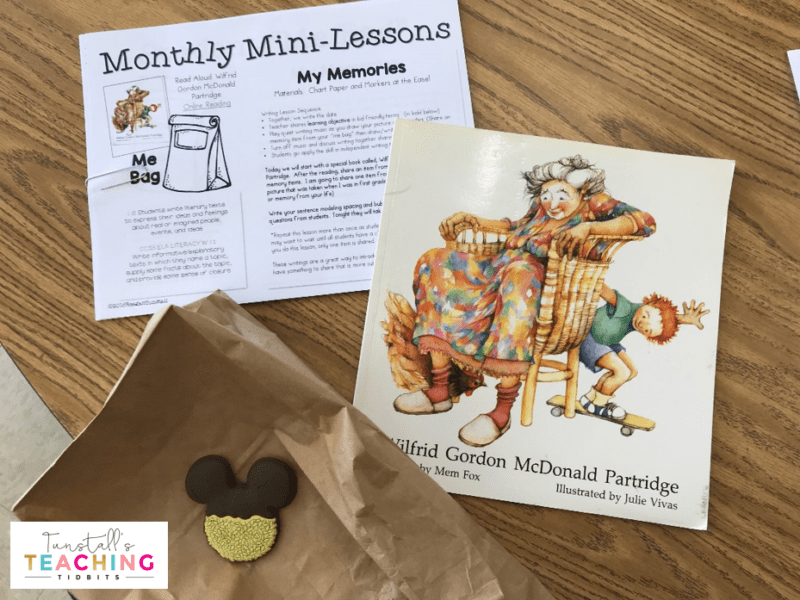
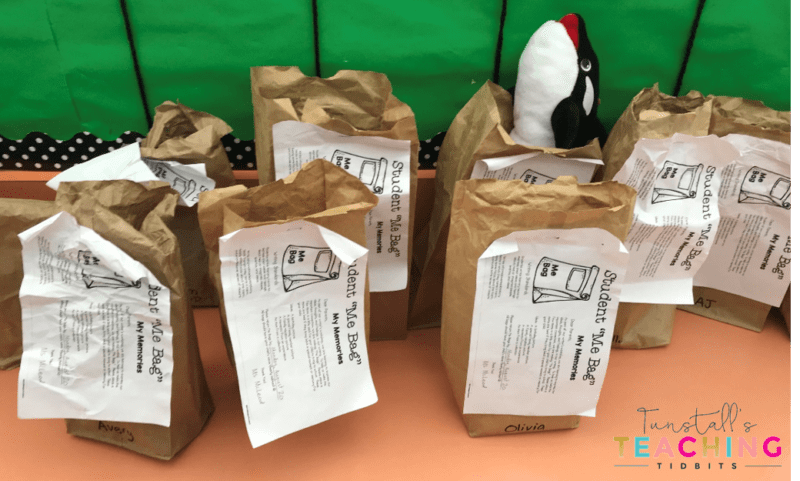
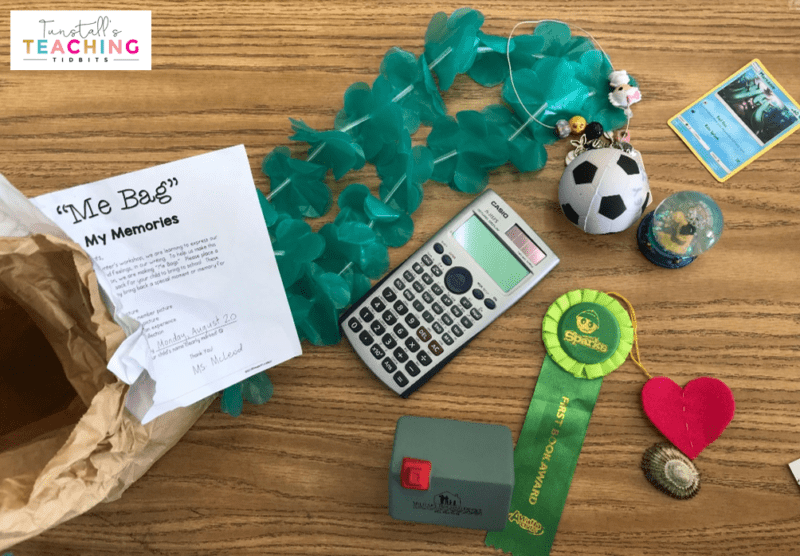

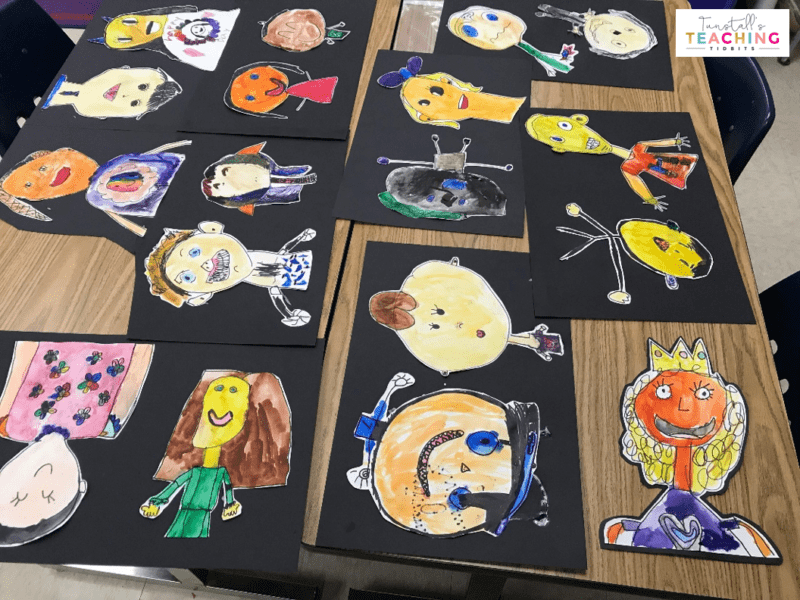






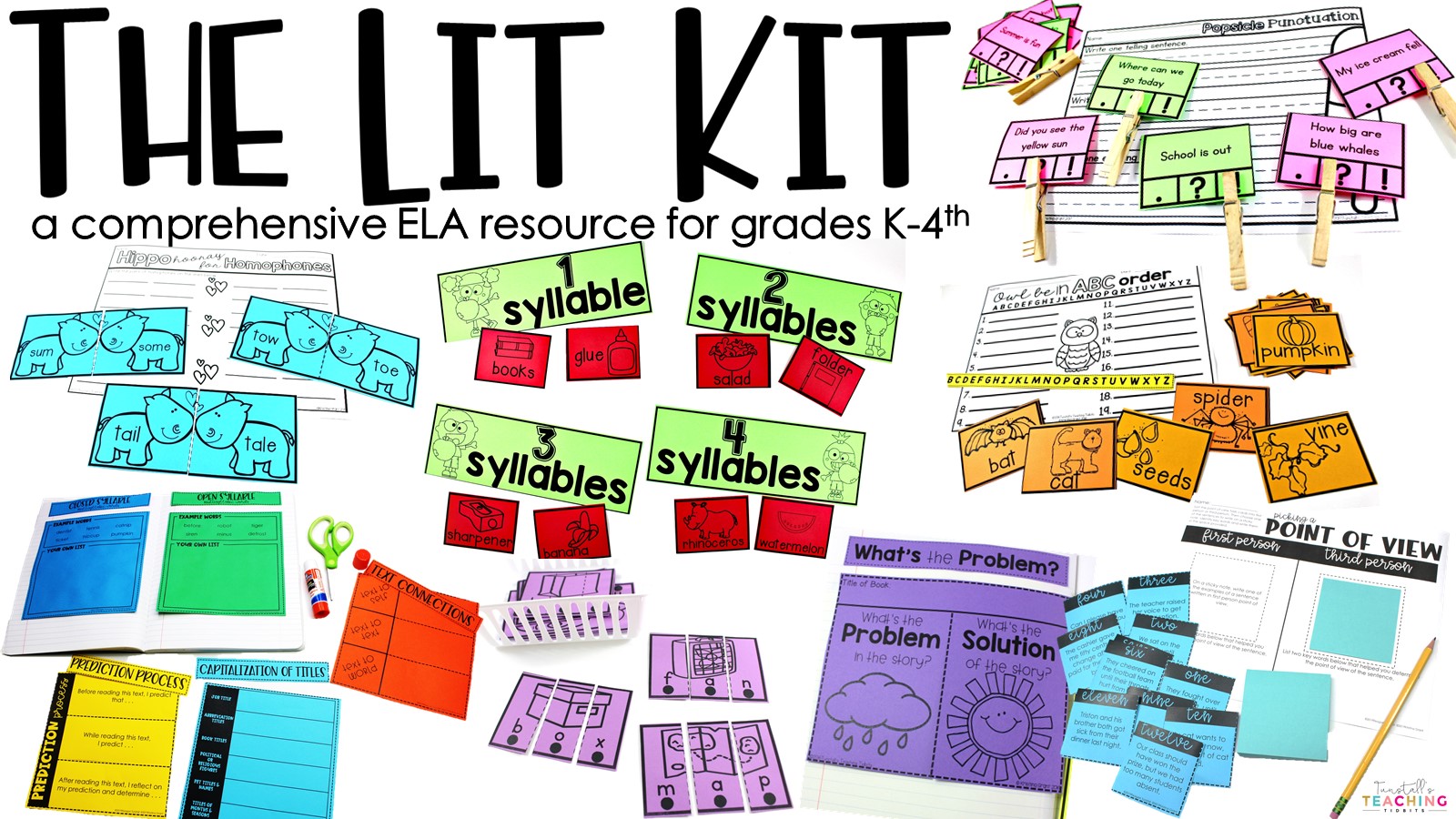
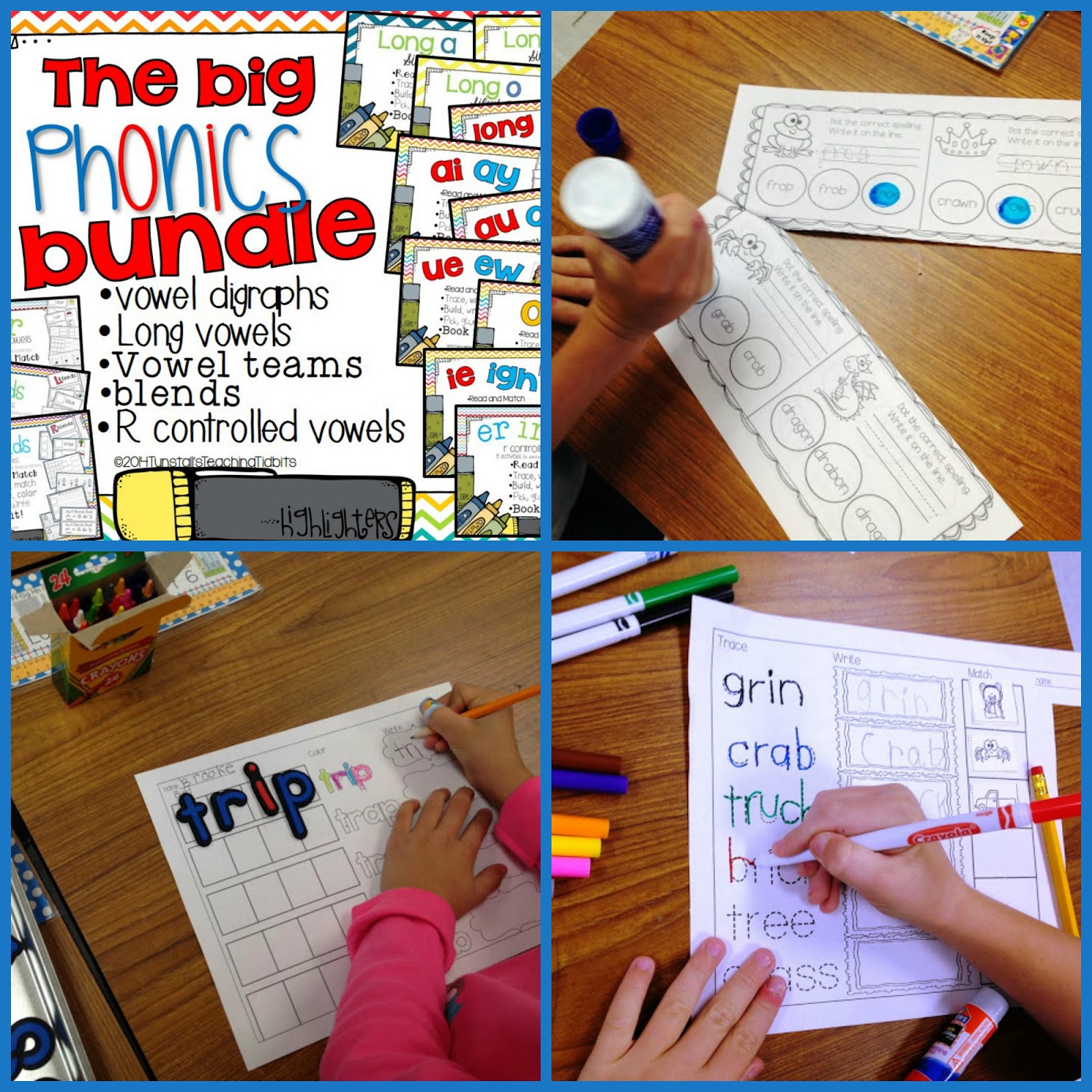
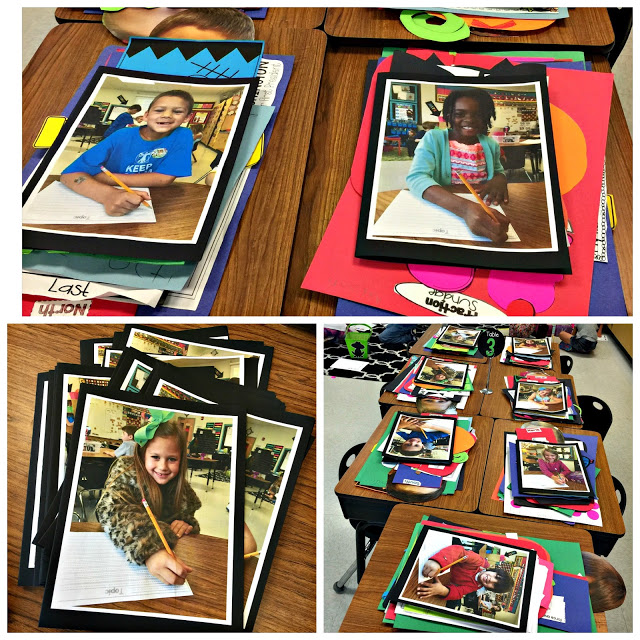
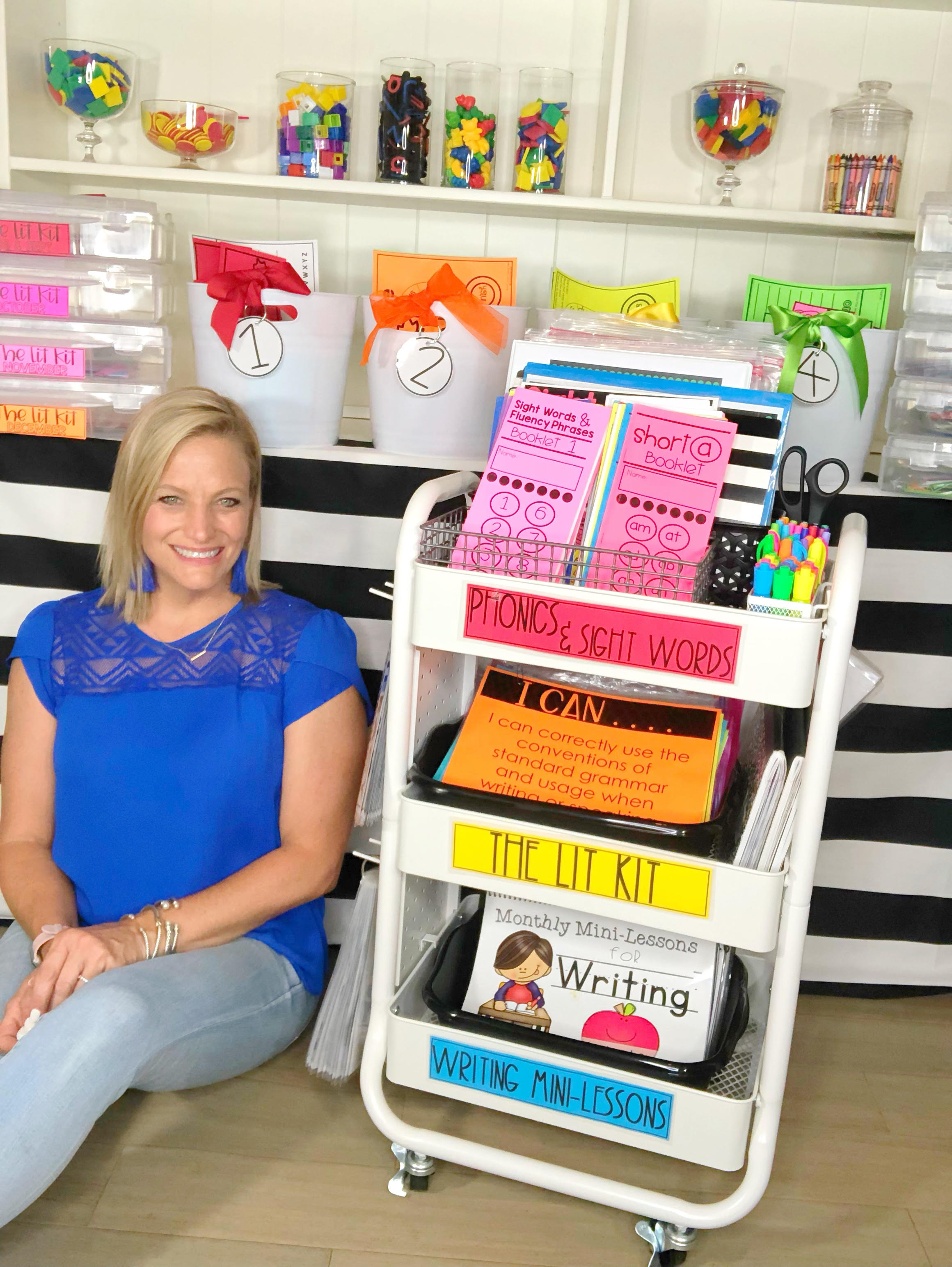


I own the first grade writing unit, is there a difference between it and the 2nd grade units.
I love the connection to the Wilfred Gordon McDonald Partridge book!! Do you have the Me Bag activity available as a stand alone resource? We just adopted the Lucy Calkins writing curriculum and this seems to be a good tie in to the small moments focus at the beginning of the year. I’d love to try this out, but don’t think I should get into full units outside our new curriculum.